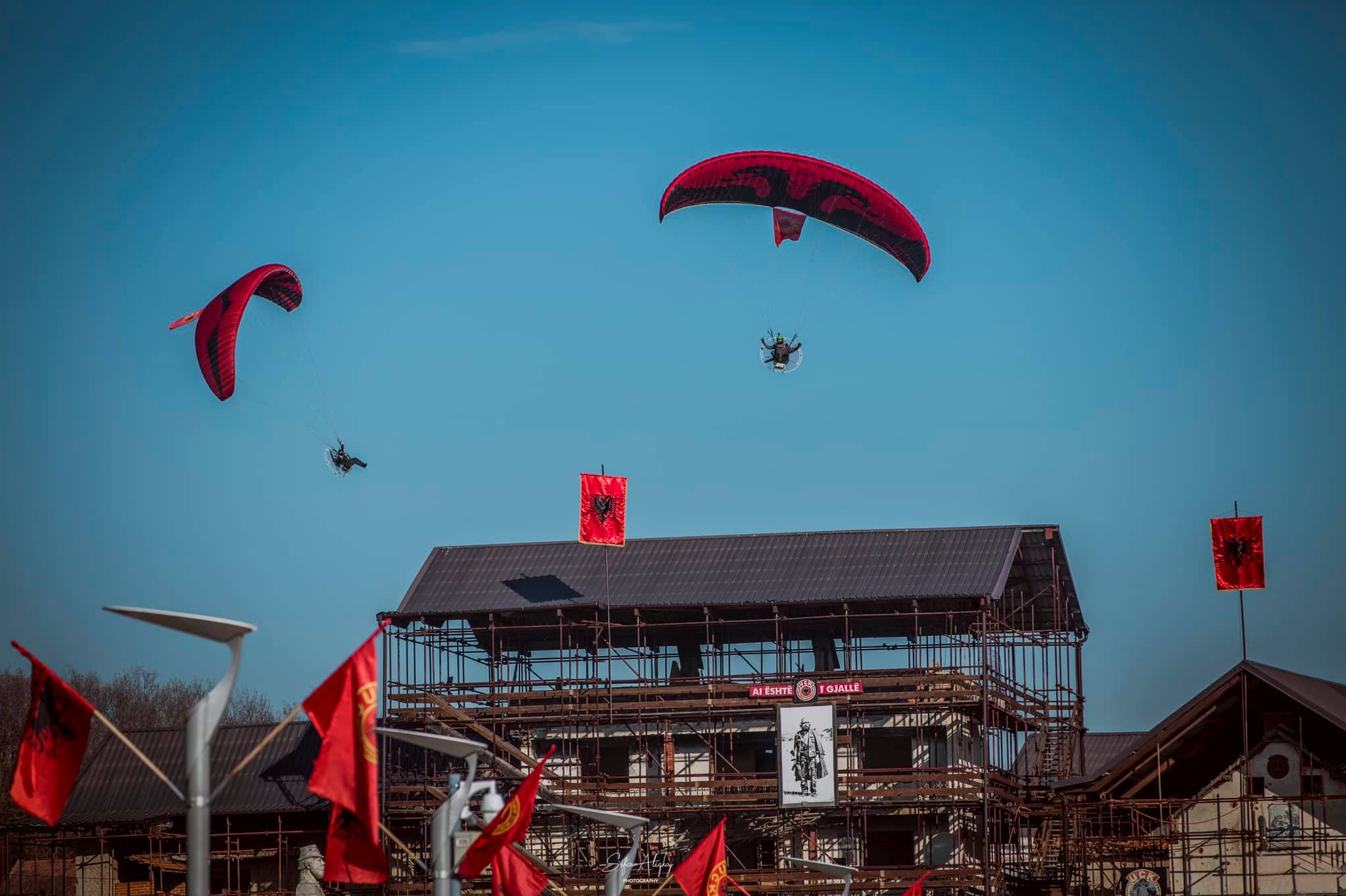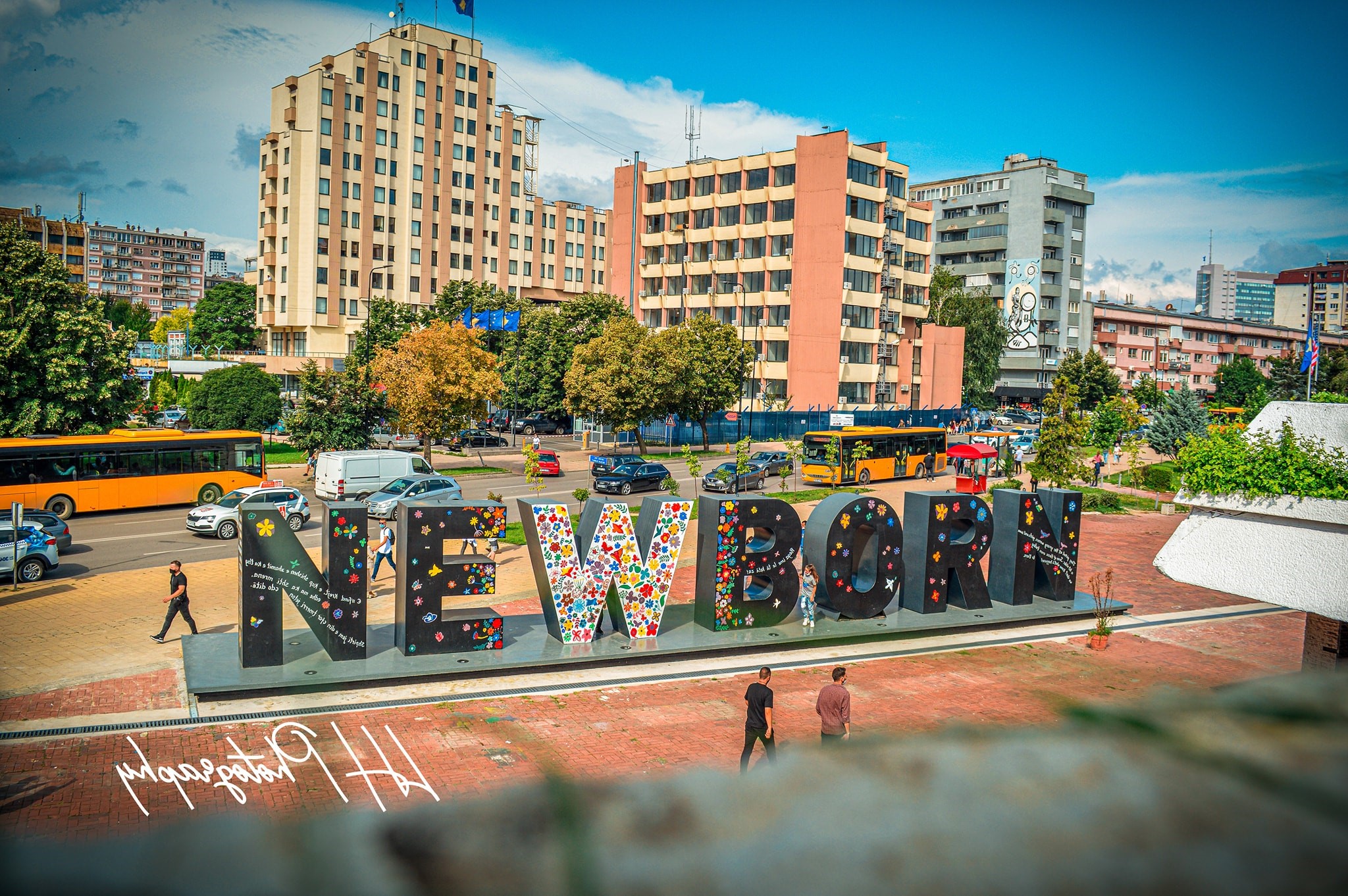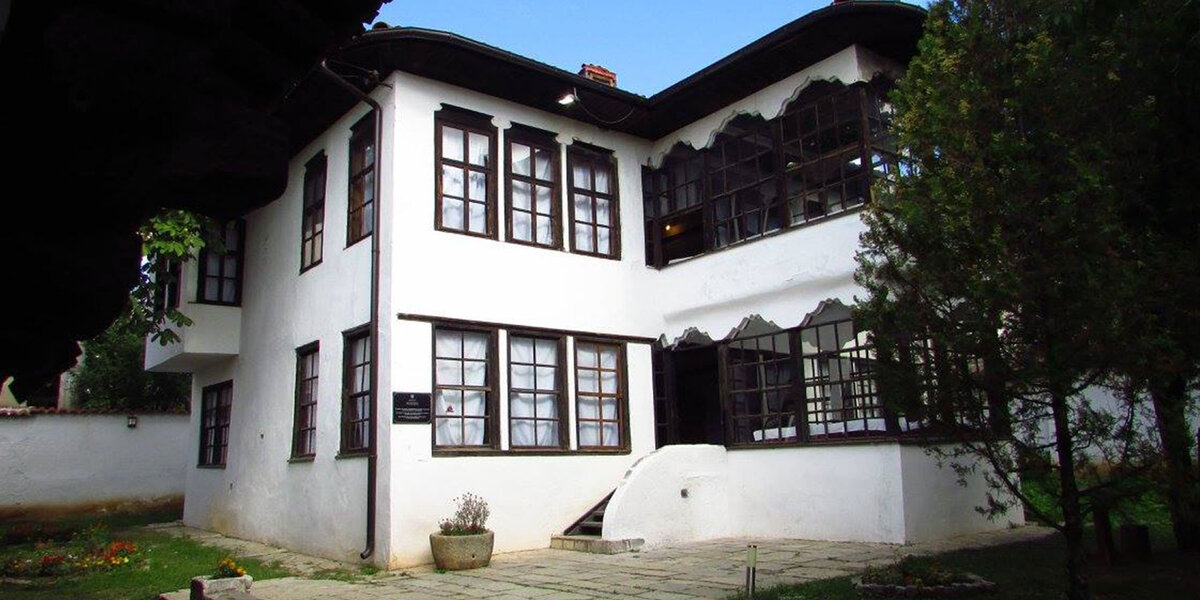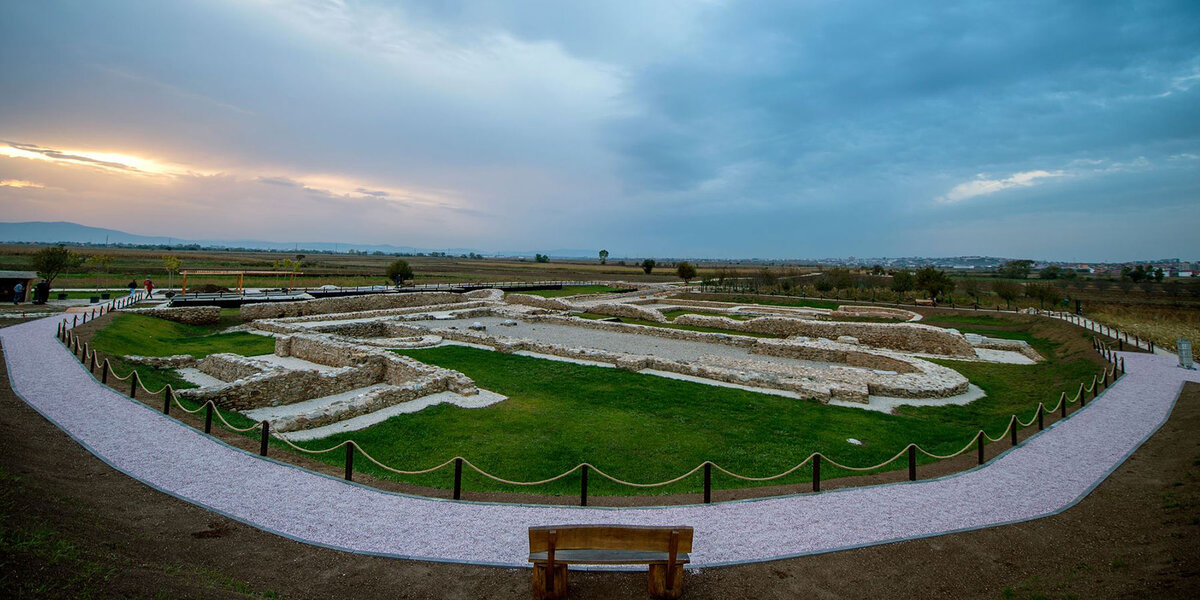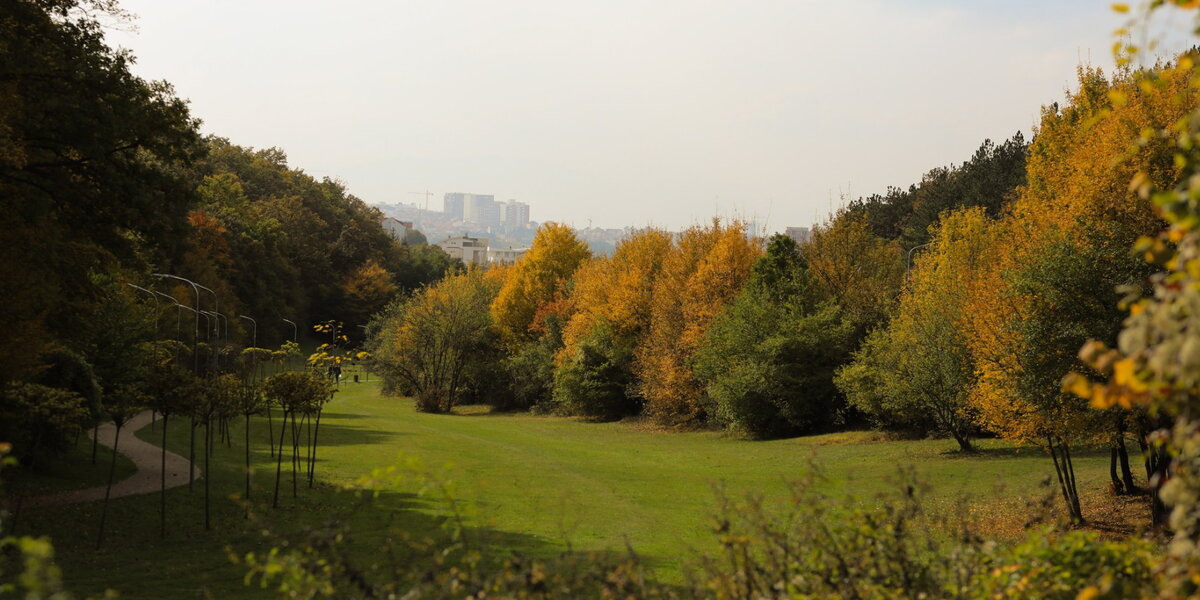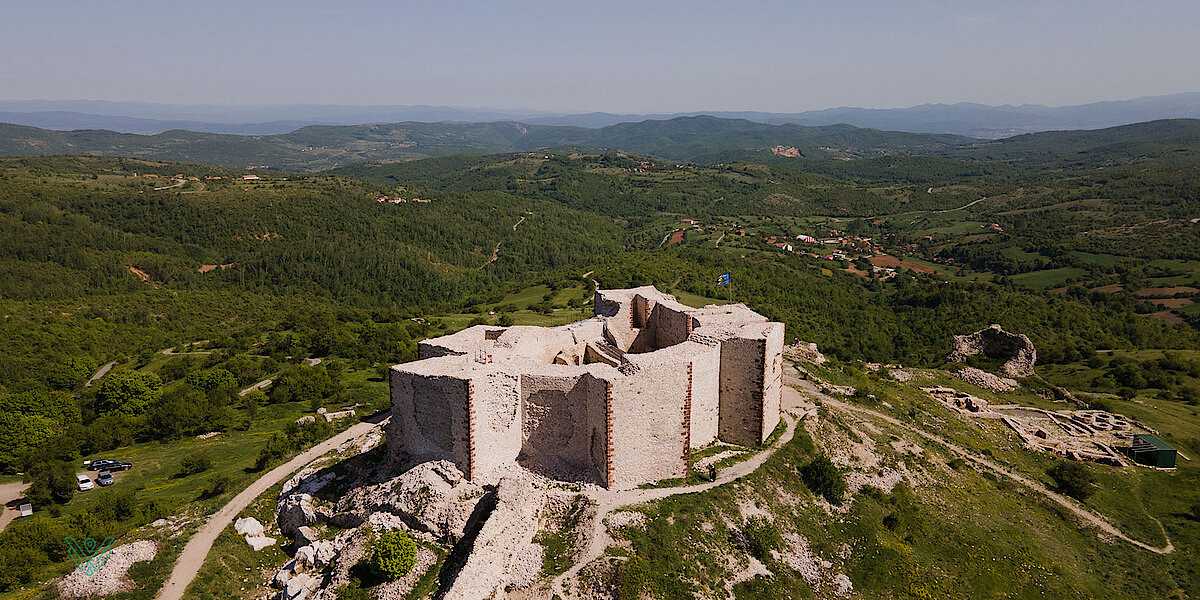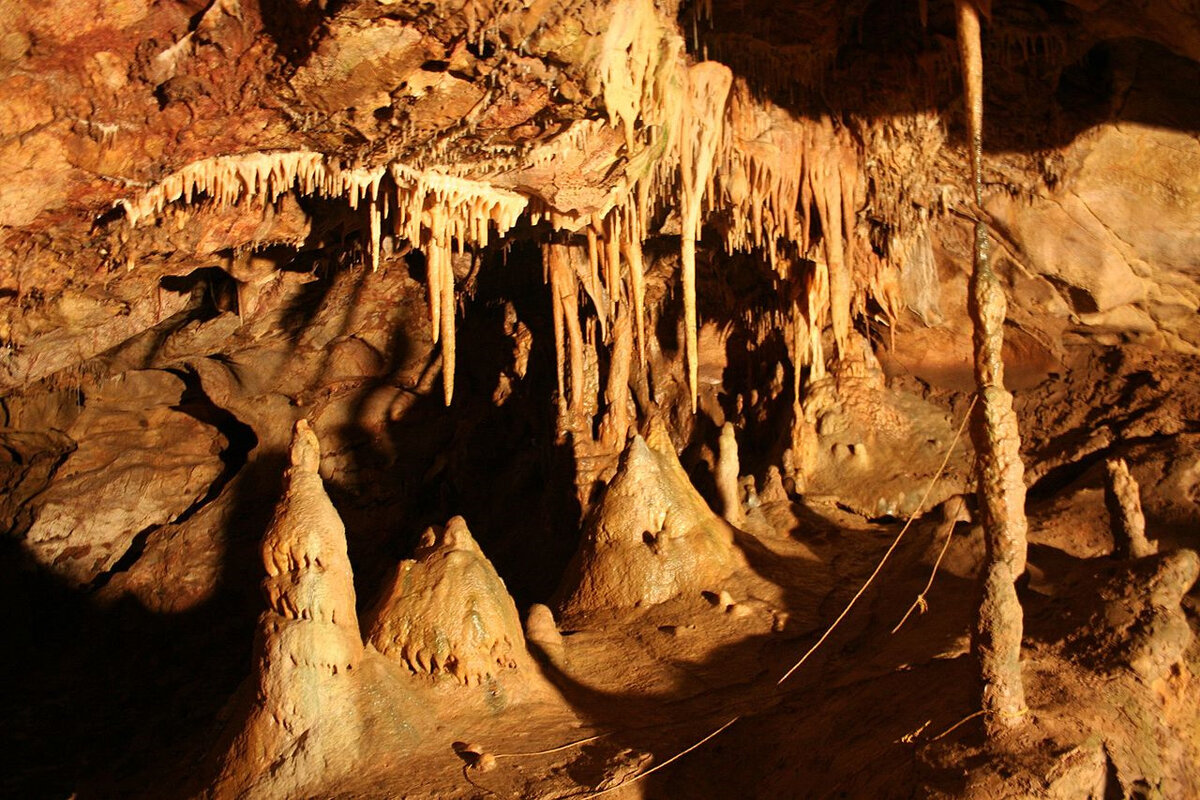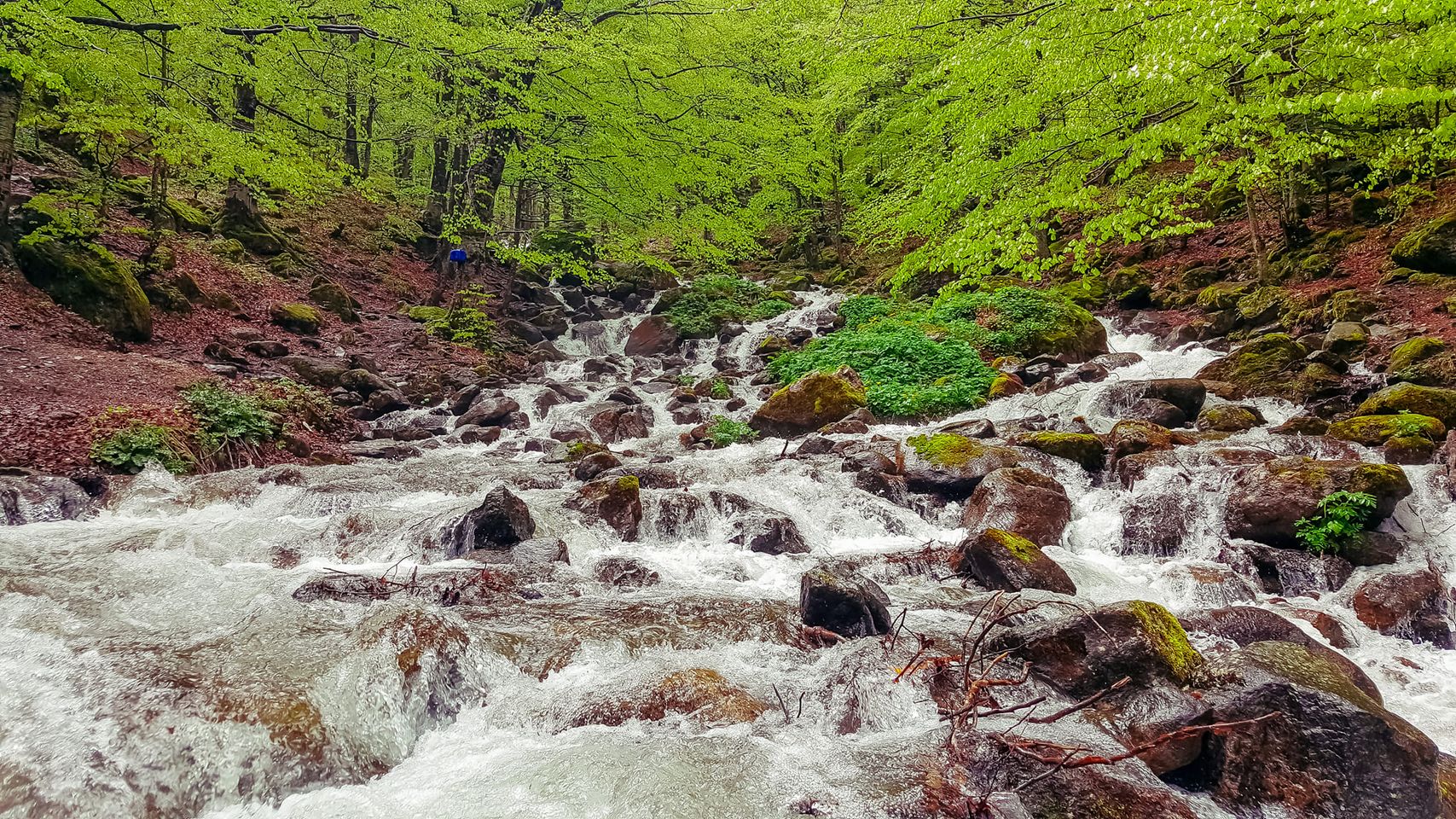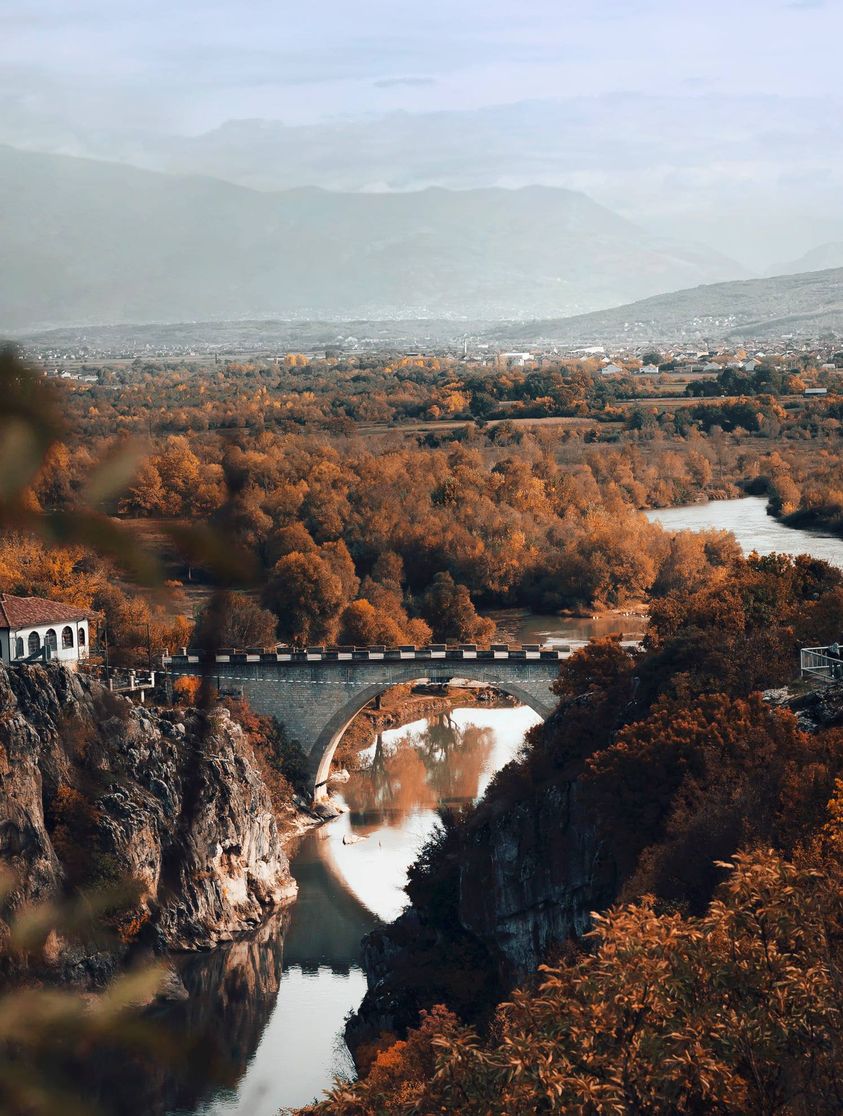Important Locations in Kosovo
Guri i Plakës
Guri i Plakës, also known as the Rock of Plaka, is a prominent geological formation located in the Rugova Gorge in western Kosovo. It is a massive, vertically standing rock that rises impressively from the surrounding landscape. Guri i Plakës is an iconic landmark in the region and holds cultural significance. It has become a symbol of strength and resilience for the people of Kosovo. The rock stands as a testament to the geological forces that shaped the area and serves as a natural monument of geological beauty.
Kompleksi Memorial "Adem Jashari"
Adem Jashari Memorial Complex, is a significant historical and cultural site in Kosovo. It is dedicated to Adem Jashari, a prominent figure in Kosovo's struggle for independence. The memorial complex is located in Prekaz, a village near the city of Skenderaj in central Kosovo. It commemorates the Jashari family, who played a pivotal role in Kosovo's fight for independence from Serbia in the late 1990s. The complex consists of several components, including the Jashari family house, which has been preserved as a museum. It showcases the life and sacrifice of Adem Jashari and his family through exhibitions of personal belongings, photographs, and historical artifacts.
The "NEWBORN" Monument
The "NEWBORN" Monument is an iconic symbol of Kosovo's independence and a testament to the country's spirit of resilience and optimism. It is located in the capital city, Pristina. The monument was unveiled on February 17, 2008, to mark the day when Kosovo declared its independence from Serbia. Designed by Fisnik Ismaili, it consists of large, colorful block letters spelling out the word "NEWBORN." Each letter represents a different design, reflecting the diversity and creativity of the country. The "NEWBORN" Monument quickly became a symbol of hope, progress, and the aspirations of the people of Kosovo. It has since become a popular spot for locals and visitors alike to gather, take photos, and celebrate significant events and milestones. The monument's design is often changed annually to reflect current events or themes, making it a dynamic and evolving symbol. It has showcased various designs over the years, ranging from political messages to artistic expressions.
Ethnological Museum of Kosovo
The Ethnological Museum of Kosovo, is a cultural institution located in the capital city, Pristina. It is dedicated to preserving and promoting the rich ethnological heritage of Kosovo. The museum aims to showcase the traditional way of life, customs, and cultural diversity of the people of Kosovo. It houses a collection of artifacts, exhibits, and displays that provide insights into the traditional architecture, clothing, handicrafts, music, and rituals of different ethnic groups that reside in Kosovo. Visitors to the Ethnological Museum can explore various sections, each representing different aspects of the cultural heritage of Kosovo. These sections may include displays of traditional costumes, household objects, agricultural tools, musical instruments, and religious artifacts.
National Museum of Kosovo
Museum of Kosovo, is a prominent cultural institution located in the capital city, Pristina. It serves as a repository of Kosovo's historical, cultural, and artistic heritage. The museum showcases a wide range of exhibits that cover various aspects of Kosovo's history, including archaeological artifacts, ancient and medieval artifacts, ethnographic collections, contemporary art, and more. The exhibits provide insights into the region's rich cultural and historical development, spanning from ancient times to the present day. Visitors to the Museum of Kosovo can explore different sections dedicated to specific periods, themes, or artistic movements. These sections often include artifacts such as ancient coins, pottery, sculptures, traditional costumes, weaponry, paintings, photographs, and multimedia installations.
National Theatre of Kosovo
National Theatre of Kosovo, is a prominent cultural institution and the premier theater in Kosovo. Located in the capital city, Pristina, it serves as a hub for theatrical performances, artistic expression, and cultural events. The National Theatre of Kosovo is dedicated to showcasing a diverse range of theatrical productions, including plays, musicals, ballets, and contemporary performances. It serves as a platform for local and international artists, directors, and actors to present their creative works and engage with the audience. The theater's repertoire includes both classical and contemporary plays, encompassing various genres and themes that reflect the artistic and social landscape of Kosovo and beyond. It strives to promote and preserve the cultural heritage of the region while also exploring new and innovative approaches to theater.
Archaeological Park of Ulpiana
Parku Arkeologjik "Ulpiana" (Archaeological Park of Ulpiana) is an important historical site located near the city of Pristina in Kosovo. It is named after the ancient Roman city of Ulpiana, which was once a significant urban center in the region. Ulpiana flourished during the Roman period and served as a hub for trade, administration, and culture. The archaeological park preserves the remnants of this ancient city, offering visitors a glimpse into its rich history and architectural heritage. Within the park, visitors can explore the ruins of various structures, including temples, houses, and public buildings. The remains of Ulpiana's forum, thermal baths, and city walls are among the notable features that provide insights into the city's urban planning and daily life during the Roman era. The archaeological park also houses a museum that showcases artifacts and discoveries made at the site, including statues, pottery, coins, and inscriptions. These artifacts provide further understanding of the culture, religion, and craftsmanship of the ancient inhabitants of Ulpiana
Bear Forest
Pylli i Arinjve, also known as the Bear Forest, is a forested area located in the outskirts of Pristina, the capital city of Kosovo. It is a protected natural reserve known for its biodiversity and scenic beauty. The Bear Forest covers a significant area and is characterized by dense woodland, consisting primarily of oak and beech trees. It is home to a variety of flora and fauna, including different species of birds, mammals, and reptiles. The forest serves as a natural habitat for the brown bear (Ursus arctos), which has given it its name. Although encounters with bears are rare, the presence of these magnificent creatures adds to the allure and uniqueness of the forest. Visitors to the Bear Forest can enjoy peaceful walks and hikes along its trails, immersing themselves in the tranquility of nature. The forest offers a refreshing escape from the urban environment and provides opportunities for relaxation, photography, and nature observation.
Germia National Park
Germia National Park, is a pristine natural area located near the city of Pristina in Kosovo. It is a popular destination for outdoor enthusiasts and nature lovers. Germia National Park spans over 62 square kilometers and encompasses diverse landscapes, including forests, meadows, and mountains. It offers a tranquil retreat away from the urban hustle, providing opportunities for recreational activities and relaxation. The park features numerous hiking and walking trails, allowing visitors to explore its scenic beauty and enjoy panoramic views of the surrounding landscapes. It is also a great spot for picnicking, camping, and enjoying outdoor sports such as cycling and horseback riding. Germia National Park is known for its rich biodiversity, with a variety of plant and animal species inhabiting the area. It serves as a natural habitat for wildlife and offers a haven for birdwatching enthusiasts.
Fortress of Artana
Kalaja e Artanës, or the Fortress of Artana, is a historical fortress located in the municipality of Rahovec in Kosovo. It is situated on a hilltop overlooking the town and surrounding landscapes. The Fortress of Artana dates back to the medieval period and is believed to have been constructed during the Byzantine era. It served as a defensive stronghold, providing protection to the local population and controlling strategic trade routes in the region. The fortress consists of stone walls, towers, and ramparts, which offer panoramic views of the surrounding countryside. Although the structure has undergone various renovations and repairs over the centuries, it still retains its historical charm and architectural significance. Visitors to the Fortress of Artana can explore its grounds and walk along the ancient walls, getting a sense of the fortress's historical importance. The site offers a glimpse into the region's rich past and allows visitors to imagine life within its fortified walls.
Gadime Cave
Shpella e Gadimës, or the Gadime Cave, is a remarkable natural wonder located near the village of Gadime in the district of Prizren, Kosovo. It is one of the most prominent and accessible caves in the country, attracting visitors with its unique geological formations. Gadime Cave is formed in limestone and stretches for several kilometers underground, although only a portion of it is open to the public. The cave is renowned for its stunning stalactite and stalagmite formations, which have taken thousands of years to develop. Visitors to Gadime Cave can embark on guided tours that take them through a well-lit pathway, allowing them to explore the intricate beauty of the cave. The guided tours provide informative explanations about the cave's formation, geological history, and the various formations that can be observed. The interior of Gadime Cave is a mesmerizing sight, with stalactites hanging from the ceiling and stalagmites rising from the ground, creating a surreal atmosphere. The interplay of light and shadow highlights the intricate shapes and formations, making it a photographer's delight. In addition to its natural beauty, Gadime Cave is also home to various species of bats, making it an important ecological site. Efforts are made to protect the cave's delicate ecosystem and ensure the well-being of its inhabitants.
Fortress of Artana
(Zahir Pajaziti Memorial Complex) is a significant historical and cultural site located in the city of Pristina, Kosovo. It serves as a memorial and tribute to Zahir Pajaziti, a prominent figure in Kosovo's struggle for independence. Zahir Pajaziti was a commander in the Kosovo Liberation Army (KLA), which played a crucial role in the fight for Kosovo's freedom and self-determination. The memorial complex is dedicated to honoring his legacy and the sacrifices made by him and others during the conflict. The memorial complex consists of several components, including a museum, a monument, and a memorial park. The museum showcases exhibits that document the history, context, and events of the Kosovo War and pays tribute to the individuals who fought for freedom. The monument at the complex stands as a symbol of resistance and courage, serving as a reminder of the sacrifices made by those who fought for Kosovo's independence. The memorial park surrounding the monument provides a serene space for reflection and remembrance.
Brezovica
Brezovica is a picturesque mountain resort located in the Sharr Mountains of Kosovo. It is renowned for its natural beauty, skiing opportunities, and outdoor activities. Situated at an elevation of around 1,700 meters, Brezovica offers breathtaking views of snow-covered peaks, lush forests, and meadows. It is a popular destination for skiing and snowboarding during the winter season, attracting both locals and international visitors. The resort features well-maintained ski slopes suitable for all skill levels, from beginners to advanced skiers. There are ski schools and equipment rental services available for those who want to learn or improve their skiing techniques. In addition to winter sports, Brezovica offers a range of activities for outdoor enthusiasts throughout the year. Hiking, mountain biking, and horseback riding are popular pursuits, allowing visitors to explore the stunning landscapes and enjoy the fresh mountain air. Brezovica also has a variety of accommodation options, including hotels and private chalets, ensuring a comfortable stay for visitors. There are restaurants and cafes where visitors can savor local cuisine and warm up with hot beverages after a day of outdoor adventures.
Prevalla
Prevalla is a popular mountain resort located in the Sharr Mountains of Kosovo. Situated at an elevation of around 1,700 meters, it offers a stunning natural setting and a range of outdoor activities for visitors to enjoy. Prevalla is best known as a winter sports destination, attracting skiers and snowboarders during the snowy months. The resort features well-maintained ski slopes suitable for all skill levels, from beginners to advanced riders. Ski equipment rental and ski schools are available to cater to the needs of visitors. In addition to skiing and snowboarding, Prevalla offers opportunities for other winter activities such as snowshoeing and sledding. The snowy landscapes provide a picturesque backdrop for outdoor adventures and create a serene atmosphere. During the warmer months, Prevalla transforms into a paradise for hikers and nature enthusiasts. The surrounding mountains and forests offer numerous trails to explore, providing breathtaking views of the landscape and opportunities to spot wildlife.
Radavc Cave
Shpella e Radavcit, also known as Bukuroshja e Fjetur or the Sleeping Beauty Cave, is a fascinating natural landmark located in the Rugova Gorge of Kosovo. It is known for its unique rock formations and intriguing geological features. The Sleeping Beauty Cave gets its name from the striking rock formation that resembles a sleeping figure when viewed from a certain angle. This distinctive feature adds to the allure and mystique of the cave. Inside the cave, visitors can explore a series of chambers and passages adorned with impressive stalactites and stalagmites, formed over thousands of years through the slow deposition of minerals. The intricate shapes and formations create an enchanting atmosphere within the cave. Guided tours are available to explore the Sleeping Beauty Cave, providing informative commentary about its geological history, formation processes, and the various formations found within. The tours offer a chance to delve into the mysteries of the underground world and witness the natural wonders of the cave.
Kusari Cave
Shpella e Kusarit, also known as the Kusari Cave, is a captivating underground cave located in the village of Kusari, Kosovo. It is a natural wonder that offers a unique and mesmerizing experience for visitors. The Kusari Cave is formed within limestone rocks and stretches for several hundred meters. It features a series of chambers, tunnels, and underground passages that have been shaped over thousands of years by water erosion and geological processes. Inside the cave, visitors are treated to a stunning display of stalactites and stalagmites, which are formed by the slow dripping of mineral-rich water over time. These formations create a surreal and otherworldly atmosphere, immersing visitors in a world of natural beauty. Exploring the Kusari Cave requires a guided tour, as the cave can be intricate and potentially dangerous without proper guidance. Experienced guides provide insightful information about the cave's geological features, its history, and the unique formations found within. The cave's interior temperature remains cool and constant throughout the year, offering respite from the summer heat and a unique environment to discover. The play of light and shadow within the cave adds to its ethereal beauty, creating a memorable and enchanting experience for visitors.
Fshajtë Bridge
Ura e Fshajtë, also known as the Fshajtë Bridge, is a historical stone bridge located in the village of Fshajtë, Kosovo. It is a remarkable architectural landmark that holds cultural and historical significance. The Fshajtë Bridge dates back to the Ottoman period, believed to have been constructed in the 18th century. It served as a vital crossing point over the Lumbardhi River, connecting the village of Fshajtë with the surrounding areas. The bridge is a beautiful example of Ottoman architecture, characterized by its stone construction and arched design. It showcases the craftsmanship and engineering skills of the time, standing as a testament to the ingenuity of the builders. The Fshajtë Bridge is not only a functional structure but also a cultural symbol for the local community. It has witnessed centuries of history, serving as a witness to the daily life and activities of the villagers throughout the years. Visitors to the Fshajtë Bridge can admire its elegant design and the picturesque surroundings of the Lumbardhi River. The bridge offers a unique opportunity to appreciate the fusion of history, architecture, and natural beauty.

